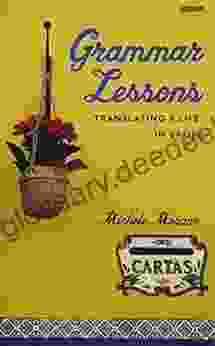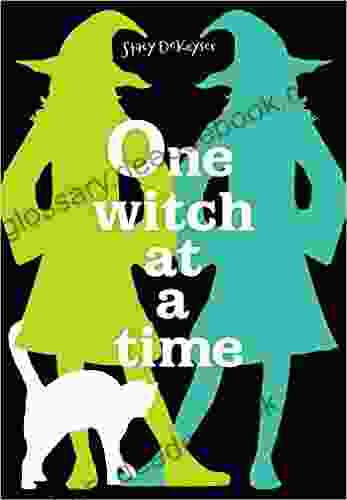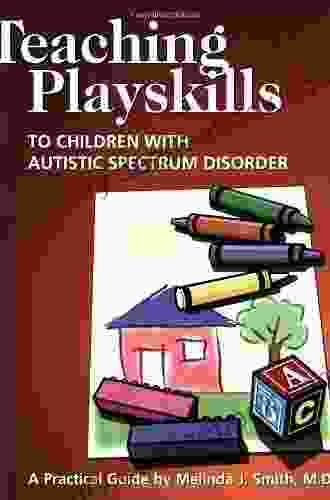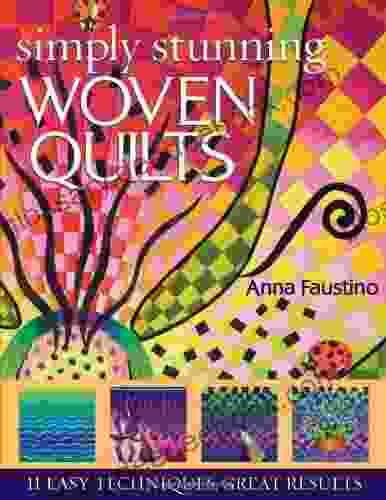Empowering Children with Autism: A Comprehensive Guide to Teaching Play Skills

4.5 out of 5
| Language | : | English |
| File size | : | 702 KB |
| Text-to-Speech | : | Enabled |
| Screen Reader | : | Supported |
| Enhanced typesetting | : | Enabled |
| Print length | : | 196 pages |
| Lending | : | Enabled |
Play is an integral part of childhood, offering a myriad of benefits for children's development. It fosters social interaction, creativity, imagination, problem-solving skills, and emotional well-being. However, for children with autism spectrum disorder (ASD),engaging in play can pose significant challenges.
Children with ASD often exhibit difficulties with social interaction, communication, and sensory processing, which can hinder their ability to fully participate in play activities. Moreover, they may have limited imaginative play skills, making it difficult for them to create and engage in pretend play.
The Importance of Teaching Play Skills
Teaching play skills to children with ASD is crucial for their overall development. Play provides opportunities for:
- Social interaction and peer engagement
- Development of language and communication skills
- Exploration of creativity and imagination
- Sensory integration and regulation
- Cognitive and problem-solving abilities
- Emotional expression and self-regulation
Effective Strategies for Teaching Play Skills
Teaching play skills to children with ASD requires a multifaceted approach that incorporates individualized strategies based on their unique needs.
1. Structured Play Therapy
Structured play therapy involves using specific activities and techniques to target specific play skills. These activities may include:
- Pretend play: Encouraging children to engage in imaginary scenarios and create pretend worlds.
- Social play: Facilitating interactions between children, teaching them how to initiate and engage in play with peers.
- Sensory play: Providing opportunities for children to explore different textures, colors, and sounds through activities like sandboxes and water tables.
- Music and movement play: Using songs, rhythms, and instruments to encourage rhythm, coordination, and social interaction.
2. Incidental Teaching
Incidental teaching involves incorporating play skills into everyday situations. This can be done by:
- Commenting on children's spontaneous play
- Expanding on their play ideas
- Providing verbal cues and encouragement
3. Video Modeling
Video modeling involves showing children videos of peers engaging in desired play behaviors. This can help them learn the appropriate social skills and play strategies.
4. Peer Training
Peer training involves teaching typically developing peers how to interact with children with ASD. This can help create a more inclusive play environment and promote social skills development.
5. Sensory Integration Activities
Sensory integration activities can help children with ASD process sensory information and improve their ability to engage in play. These activities may include:
- Swings and trampolines: Providing vestibular and proprioceptive input
- Sensory bins: Exploring different textures and shapes
- Weighted blankets: Creating a calming and comforting environment
- Fidget toys: Providing opportunities for self-regulation
Tips for Success
To ensure the effectiveness of play skills teaching, consider the following tips:
- Start small: Begin with short and structured play sessions.
- Be patient and supportive: Encourage children's efforts and focus on their strengths.
- Incorporate interests: Choose activities that align with children's interests and preferences.
- Set realistic goals: Break down play skills into smaller, achievable steps.
- Collaborate with therapists: Work closely with occupational therapists, speech-language pathologists, and other professionals to address specific needs.
Teaching play skills to children with ASD is a rewarding and transformative experience. By incorporating effective strategies, such as structured play therapy, incidental teaching, video modeling, peer training, and sensory integration activities, educators, therapists, and parents can empower children with the essential skills they need to engage in meaningful and enjoyable play. Through play, children with ASD can fully immerse themselves in the joys of childhood, fostering their social, emotional, and cognitive development.
4.5 out of 5
| Language | : | English |
| File size | : | 702 KB |
| Text-to-Speech | : | Enabled |
| Screen Reader | : | Supported |
| Enhanced typesetting | : | Enabled |
| Print length | : | 196 pages |
| Lending | : | Enabled |
Do you want to contribute by writing guest posts on this blog?
Please contact us and send us a resume of previous articles that you have written.
 Novel
Novel Text
Text Genre
Genre Reader
Reader Library
Library Paperback
Paperback E-book
E-book Magazine
Magazine Newspaper
Newspaper Paragraph
Paragraph Bookmark
Bookmark Glossary
Glossary Foreword
Foreword Synopsis
Synopsis Footnote
Footnote Codex
Codex Tome
Tome Bestseller
Bestseller Autobiography
Autobiography Reference
Reference Encyclopedia
Encyclopedia Dictionary
Dictionary Thesaurus
Thesaurus Narrator
Narrator Character
Character Resolution
Resolution Librarian
Librarian Catalog
Catalog Card Catalog
Card Catalog Borrowing
Borrowing Archives
Archives Study
Study Research
Research Academic
Academic Reading Room
Reading Room Special Collections
Special Collections Literacy
Literacy Storytelling
Storytelling Reading List
Reading List Book Club
Book Club Stephen P Halbrook
Stephen P Halbrook Anna Keay
Anna Keay Barry Mazor
Barry Mazor David Kahn
David Kahn David Sherrin
David Sherrin Anna Kang
Anna Kang Philip Schultz
Philip Schultz Emily Merrill
Emily Merrill Delip Rao
Delip Rao Grace Blakeley
Grace Blakeley Chantal Heide
Chantal Heide Tiffany Forbes
Tiffany Forbes Janet Hong
Janet Hong Rosemary Feasey
Rosemary Feasey Elisa Russell
Elisa Russell Natavia
Natavia Doug Motel
Doug Motel Lay Hwee Yeo
Lay Hwee Yeo Dr Cie Allman Scott
Dr Cie Allman Scott Stephen M Feldman
Stephen M Feldman
Light bulbAdvertise smarter! Our strategic ad space ensures maximum exposure. Reserve your spot today!

 Henry Wadsworth LongfellowOn the Art of Singing: A Comprehensive Guide to Mastering Vocal Techniques
Henry Wadsworth LongfellowOn the Art of Singing: A Comprehensive Guide to Mastering Vocal Techniques
 Dylan MitchellTranslating Life in Spain: Sightline Books - A Journey into the Heart of...
Dylan MitchellTranslating Life in Spain: Sightline Books - A Journey into the Heart of...
 Larry ReedThe Ultimate Travel Guide and Map for Royal Deeside Cairngorm National Park,...
Larry ReedThe Ultimate Travel Guide and Map for Royal Deeside Cairngorm National Park,... Chinua AchebeFollow ·5.1k
Chinua AchebeFollow ·5.1k Kendall WardFollow ·7.5k
Kendall WardFollow ·7.5k Elmer PowellFollow ·5.2k
Elmer PowellFollow ·5.2k Ignacio HayesFollow ·7.1k
Ignacio HayesFollow ·7.1k Timothy WardFollow ·7.7k
Timothy WardFollow ·7.7k Alexander BlairFollow ·3.2k
Alexander BlairFollow ·3.2k Cameron ReedFollow ·6.2k
Cameron ReedFollow ·6.2k Jack ButlerFollow ·18.7k
Jack ButlerFollow ·18.7k

 Desmond Foster
Desmond FosterTravesti Life in the Favela: An Exploration of Identity,...
In the bustling...

 Bobby Howard
Bobby HowardCorruption and Development in South Korea and the...
Corruption is a major...

 George Martin
George MartinGaslighting, Blame Shifting, and Consent in Marriage: A...
Gaslighting,...

 Grayson Bell
Grayson BellOne Witch at a Time: Dive into the Enchanting World of...
Welcome to the Mystical Realm of...

 James Hayes
James HayesLatino Mass Mobilization: Immigration, Racialization, and...
Latino mass...

 August Hayes
August HayesMarxist Film Theory and Fight Club: A Long-Tail...
Marxist film theory,...
4.5 out of 5
| Language | : | English |
| File size | : | 702 KB |
| Text-to-Speech | : | Enabled |
| Screen Reader | : | Supported |
| Enhanced typesetting | : | Enabled |
| Print length | : | 196 pages |
| Lending | : | Enabled |






